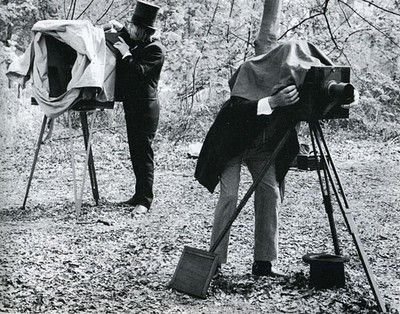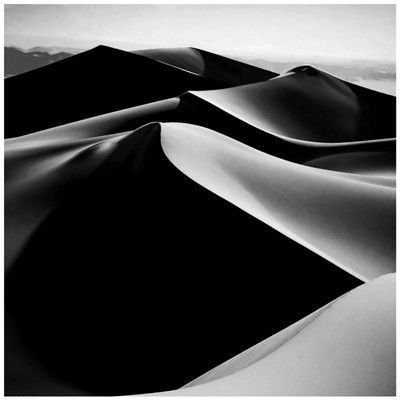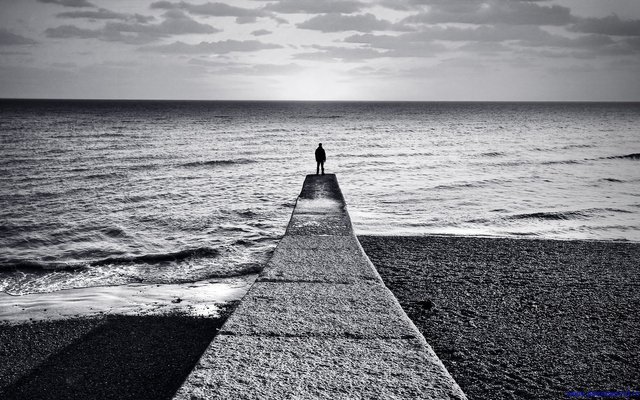Hi everyone,
the object of this post is a topic that, at least once in a lifetime, everyone that love photography, even just as a hobby, thought about!
Color photo versus black and white, which one is better, and why?
A bit of history
When the first camera was born, color was not impressionable on film and there was no problem between choosing a monochrome or color image: the photos were black and white out of necessity.
With the development of technology, cameras have become increasingly complex tools, capable of grasping reality in the most diverse and creative ways.
For some decades, therefore, attention has been paid to the question of the stylistic choice between black and white or color photos.
Shot as you see
Our affinity with color also passes through our vocabulary: we use the word colorless to describe a thing or experience that is boring and not very stimulating.
So why and, above all, under what circumstances should you opt for a black and white shot ?
In nature, colors are meant to grab our attention. Yet, even without color, images are powerful representations of the artistic spirit and photographers have very different opinions when it comes to choosing between the two options.
Some like to work exclusively on grayscale, while others absolutely shy away from this idea. Fortunately, whether you are a professional in the field or just a photo enthusiast, the age of digital imaging allows you to decide whether our images look better or black and white even after taking them.
However, this ease of conversion can also become a problem, because there can be strong indecision as to which post-production path is best to take. While there is no absolute magic formula for determining which is the best choice for your image, there are a few basic principles to keep in mind that can help you make your decision.
DECISION colors or grayscale?
1. Role of colors in the image
Certainly depends on a subjective criterion, but a reflection on this element should be a priority in the decision-making process.
Color is a fickle factor and can unintentionally add or take away interest in a photograph. The fact is that color can sometimes be a distraction or be rather insignificant.
On the other hand, there are times when, instead, its presence is vital.
The photo of a landscape in which a rainbow takes on a prominent note is inevitably linked to the suggestion given by the colors. So you have to ask yourself first if the beauty of an image is based solely on color or if there are other interesting aspects that can be enhanced.
This is not to say that all colored objects and scenes would not be equally interesting if they were represented in black and white, but as a general rule most of the subjects that present themselves in reality with many and different shades of color should remain so in the photo.
Think, for example, of the case of graffiti, murals, fireworks, play of lights, fields of poppies and anything else that is interesting thanks to the obvious colors.
Highlighting colors allows us to emphasize greater adherence to reality, which appears variegated and luminous to our eyes: light is used to create color contrasts where these are the core of the observer's attention.
A sunset with a magenta sky cannot render effectively when represented in black and white.
If, on the other hand, the essential strength of the image isn't based specifically on colors, converting to grayscale will allow you to emphasize other visual or atmospheric qualities.
When an image has nothing to say in terms of color gradations or if these are soft and muted, you can use the backlight or the backlight, as a silhouette, to create a strong contrast with the subject, or you can choose to convert it to black and white to create a representation that might otherwise be called 'pop'.
2. Interesting lights or contrasts in the scene
This is something less experienced photographers tend to struggle with, as being able to see good light or capture contrasts usually requires the ability to pre-visualize an image.
Don't worry: the development of an eye is refined thanks to the experience and time devoted to observation. The more you try to look beyond what is evident, the more you will learn to see almost in black and white.
When you remove color from the photographic equation, only the differences in tone remain, in terms of highlights and shadows. This difference is what makes black and white images truly captivating, as they bring strong contrasts to the overall photographic image. So when you find that a certain scene or subject presents the opportunity to exploit strong lighting contrasts between light and shadow, it could be your great opportunity to try composing a shot directly in black and white.
These are subjects whose details would have gone unnoticed in a color photo and which in this way, instead, can bring out fascinating features. The communicative effectiveness of the photograph of a skyline, for example, can be rendered well in black and white if the intent is to emphasize the shape and structural elements of the buildings, while in the color version you can focus more on the use of reflections of night lights exploiting their evocative power.
3. Grape, the texture in black and white
I just mentioned the importance of a component that can make a difference: the structure.
It is an aesthetic factor that is relevant in all forms of art, from music to painting to photography. Even the subtleties present in the texture of the scene can be used to express the quality of a photo. When we talk about texture, we usually refer to the use of the sense of touch, but the description of how objects are physically perceived is only one of the ways in which this element can be transmitted.
The texture of things in a photograph may seem difficult to grasp: it must first be perceived through the eyes to determine if it is smooth, rough or grainy.
Transforming the tangible tactile into an equally tangible visual image is possible, but it requires practice and a trained eye, and it is precisely in this circumstance that working in black and white can be the best choice.
Examples of textures that work well for black and white photos are wood materials, metals and stones, as well as plants and human skin.
Adding directional lighting (natural light from a side source, for example) can help to emphasize and highlight the imperfections of a particular grain.
In addition, to capture and highlight the details of a subject, I recommend you use macro lenses, or lenses that are able to get close to the subject to the point of capturing very small details, not directly visible to the naked eye.
4. State of mood you want to transmit
Some images are rendered surreal when they are reproduced in black and white. Black and white is timeless, but even more so, it can be said that the absence of color is able to transcend reality and transform the image by placing it in a dimension that has to do with abstraction bordering on fantasy. . A black and white image deconstructs a scene and reduces it to its essential forms, eliminating any space-time reference.
The depth given by black and white is useful if you want to place a subject concretely present in front of your eyes there and then. Removing the colors, in this case, is equivalent to moving away from the current condition to amplify the message and give rise to subjective interpretations at the expense of realistic information.
In this case black and white photography is a pure stylistic choice which, by eliminating the accessory elements with color, minimizes the scene and aims at essentiality, as could happen in other forms of art such as painting or literature. If your intent is to paint an image through the camera lens, black and white is undoubtedly the best choice.
Conclusion
You will have understood that, while the subjectivity remains in the choice that each photographer can make, there are some images that, due to their intrinsic characteristics or linked to the context, are better suited to be shot in black and white or in color.
In summary, it is preferable to take color photographs to represent reality as it is, in its entirety and immediacy. Here, in addition to perspective and contrast, you can add characterizing elements such as color variations, from brilliant to opaque, reflections, saturation, chromatic brightness.
Using color photography allows you to highlight the wide range of shades with which natural and artificial elements are impregnated in their most concrete essence, especially when these represent the center of interest around which you want to focus the attention of the observer.
Conversely, it is better to focus on black and white when it is possible to obtain a gain linked to some graphic aspects, such as the ability to highlight the shape and contours of objects, their volume, the texture and the material they are made of. If you want to arouse a certain mood or to abstract a subject from its real context.




It sounds like a very interesting topic. Photography always attracted me. When I will have more time, I will definitely try it.
Downvoting a post can decrease pending rewards and make it less visible. Common reasons:
Submit
How do i join your class in steemskill share
Downvoting a post can decrease pending rewards and make it less visible. Common reasons:
Submit
Sorry for late replay, I was very busy in real life.
Please read my previous lessons, there you can get what we have done until now.
To reach me please just drop comments and I'll reply, next time I'll try to be faster ;)
Downvoting a post can decrease pending rewards and make it less visible. Common reasons:
Submit